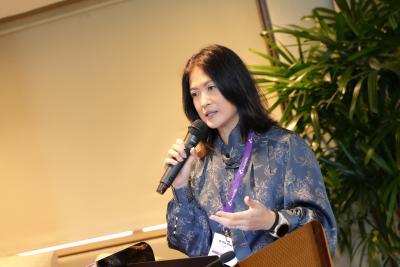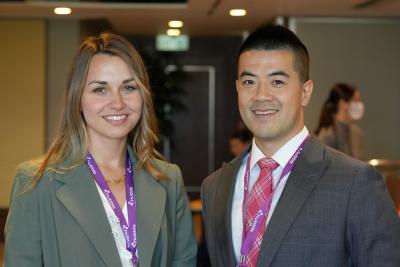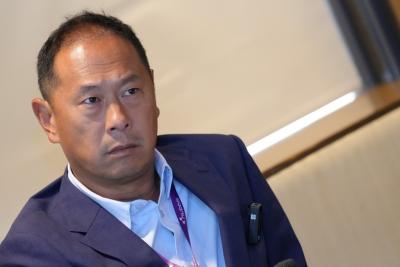Asia Private Wealth Market Investment Sentiment Survey – Outlook 2H 2023

Jul 31, 2023
Adapting Attitudes and Portfolios to Current and Anticipated Global Conditions
Gauging current private client attitudes in Asia
Hubbis has chosen this moment to partner with Janus Henderson Investors for a Survey to take stock of the perspectives of key investment gatekeepers in Asia’s private wealth management community, spanning Private Banks, Retail Banks, IFAs, Independent Asset Management firms, External Asset Managers, Multi-Family Offices, and Single-Family Offices.
Our aim was to gauge how private clients in the region are looking at their investment portfolios, how their investment outlook might be evolving, and what they hope to achieve in the next six to 12 months and beyond.
The mission for this Survey is therefore quite straightforward – it was designed as a barometer of fears, hopes, and likely future intentions amongst Asia’s private clients in order to understand more about how their portfolio formation is evolving against the backdrop of global and regional events and markets.
A brave new world
2022 was the year when inflation broke through in the major Western economies after some 15 years largely in abeyance, leading to rapid rate rises in the US and Europe, especially in the UK. 2022 was also the year in which value outperformed growth, again for the first time in many years. In the first half of 2023, that market scenario turned on its head, and more rapidly than many anticipated, as growth outperformed value and by a significant margin - witness the more than 50% surge in Apple’s valuation in H1 alone this year.
Meanwhile, also in the first half of 2023, the MSCI World rose by roughly 8%, and the MSCI USA index was up nearly 12%, albeit with that significant uptick led by only a small number of mega-cap and super-liquid stocks, again most obviously exemplified by Apple, with its colossal USD3 trillion-plus market capitalisation at the end of June.
Many uncertainties remain
With inflation far from under control in the Western economies, with a major question mark over whether the US will fall into recession, with interest rates potentially still set to rise further – especially in the UK where inflation has been rampant – and with heightened geopolitical worries over the Ukraine conflict, US-China tensions and a host of other potential flashpoints, investors are facing far more difficult conditions than they have seen since the world emerged from the worst of the Global Financial Crisis that began some 15 years ago in 2008.
The Survey accordingly aimed to identify if private clients in Asia are backing off from committing funds to the markets. We wanted to gauge if they are using this moment as an opportunity to reshape allocations, with greater attention to risk mitigation.
Are they adding in specific areas they believe will provide stability or outperform? Are they adopting a longer-term perspective on returns? Are they shifting from equity to fixed income? Or from public to private markets? Are many of them still rather gung-ho, as was the sentiment for many years, or has that era of great optimism been sidelined? Is the 60-40 portfolio back in favour, or perhaps variations around that theme? What sectors, assets and geographies do they like, and why?
In Asia, optimism still prevails
Before setting out any insights or findings, we must be careful to set the scene for Asia itself. As a broad generalisation, economic momentum across the vast region is holding up robustly, sentiment is still largely positive, there is a more dynamic, liberal and less regulated business environment, and demographics are very encouraging towards growth.
Moreover, inflation in Asia remains relatively muted and the outlook for interest rates is fairly benign, with China most notably able to lower rates and relax money supply just as the major Western economies are moving sharply in the other directions
In Asia, there are rapidly rising levels of domestic consumption, reducing reliance on exports. There is a massive surge in the numbers and wealth of the middle classes and the mass affluent investor segment is, as a result, expanding rapidly across the region. There is an ongoing shift of investible funds from plain vanilla deposits to the capital markets, from passive to more active and longer-term financial investments. There is rising awareness of the need to save and invest for all types of plans, future family objectives and comfortable retirements.
And at the same time, HNW and UHNW private wealth creation in Asia also continues to expand apace, and investors in these upper segments are becoming more sophisticated and also demanding more diversification and a wider array of products, geographies, markets and alternative assets.
Less fear, more hope
It is of little surprise, therefore, that our respondents tell us that investors in Asia are considerably less worried about their personal finances than those in the developed economies, where growth has stalled and where inflation, interest rates and often taxes have been rising sharply in the past 18 months or more.
Anyone who has lived and worked in Asia will attest to the remarkable resilience of sentiment, as optimism tends to bounce back rapidly in the region, driven in large by the broader economic impetus the region has enjoyed for several decades already.
Indeed, amongst the findings of the BCG Global Wealth Report 2023: Resetting the Course, which is the 23rd annual global wealth report from Boston Consulting Group (BCG), they reported that financial wealth continued to grow in Asia Pacific, the Middle East, Africa, and Latin America in 2022, but had declined in North America and Europe.
As wealth expands, so too does the need for wealth preservation
Nevertheless, there are also clear signs that Hubbis has tracked across the region in our many live conferences and more bespoke events that wealthier private clients in Asia are in large part focused on wealth preservation as their first priority, and as such are gradually becoming more inclined to allocate a larger portion of the investments to advisory mandates with their private banks and wealth managers, and perhaps even slice off portions to discretionary mandates.
And all of these trends and themes are set against the continuing globalisation and diversification of the investment portfolios of Asia’s private clients, a trend that Hubbis has watched intensify over the past five-plus years in particular, as evidenced in our many conferences and thought leadership events, and through numerous interviews and reports.
Smarter and more engaged
Meanwhile, Asia’s private clients are also becoming smarter and more professional in the way they look at their investment portfolios, resulting in a somewhat more diversified, balanced and risk-aware allocation, even if curated themselves and not necessarily through advisory or DPM mandates at their wealth managers. And this is even more the case for those choosing to align themselves more with their private bank or EAM’s advisory or DPM offerings.
Accordingly, the overall environment can be characterised as one in which investors in Asia appear willing to gradually adopt more of a balanced portfolio perspective and allocation, but in which many also still like to allocate some of their investments towards self-directed, shorter-term and more speculative trades, as Asian clients have tended to prefer in the recent past years, but perhaps now with a higher degree of focus on quality and liquidity.
Honing and refining global portfolios
Looking at the big picture, the overriding impression from the replies to this short survey is that conservatism and caution do indeed prevail amongst the private bank and wealth management clients in the region, but that in a world of higher – perhaps more normalised – returns on debt, portfolios can be more easily refined to provide yield and a strong degree of protection in assets such as US Treasuries and developed market investment grade fixed income, whilst allowing for potential gains from higher-quality equity exposures, both public and private.
The quest for quality growth
In 2022, Warren Buffett was quoted as saying that in times of inflation “the best thing you can do is to be exceptionally good at something; people are going to give you some of what they produce in exchange for what you deliver”. The clear implication is that quality must be central to any proposition at times when real inflation is eroding the value of money despite money market returns being elevated. Perhaps the most striking example of that is Apple itself.
Buffet is also on the record in the past stating that in times of higher inflation, investors should be wary of companies that have high and ongoing capital expenditure, as they consume capital and rack up additional debts that might not be matched by additional returns. The optimal companies in this environment are those that can sustain volumes and possibly raise prices without losing market share and without racking up additional debt.
Holding on and building for the future
Whatever the actual scenarios that emerge in the US and other leading markets, investors need to devise and pursue a smart strategy to first, protect their wealth and second, to position themselves for opportunities as they emerge.
Accordingly, it is not surprising to find that respondents to this Mini-Survey report that their private client investors are inclined towards a chunky allocation to liquid, high-grade fixed income, a healthy dose of cash as ‘dry powder’ ready to re-enter the markets but that offers reasonable returns at the short-end, and a quite sizeable position in public market equity, as well as alternatives in the form of hedge funds, gold and private markets.
At a Glance – A Snapshot of the Key Insights & Observations
- 60% of private clients in Asia are currently either defensive or cautious, according to their wealth managers, while 32% will accept a modicum of risk in the hope of somewhat elevated returns, and only 8% are currently adventurous and willing to absorb higher risk.
- 96% of private clients appear either very worried about inflation [in the leading global economies] in the year ahead and a mere 4% are said to be not worried at all.
- 96% of clients are also very or somewhat worried about the performance of the major world markets in the upcoming 6 to 12 months.
- 71% of wealthy private investors in Asia want more diversification options and access to interesting products and ideas, in order to stay invested.
- Asia’s private clients are increasingly inclined towards somewhat more defensive and diversified portfolios with a robust balance of global exposures across both private and public market assets, including alternatives such as hedge funds, gold and commodities.
- The jury is roughly split as to whether the traditional 60/40 asset allocation model is back in favour, or whether it should be.
- Only 12% of replies stated that ESG is very important to their clients in Asia, but on a more encouraging note for those beating the ESG drum, 64% indicated this is moderately but increasingly important to their clients.
- Key investment segments include technology/data/communications, healthcare, alternative energy, climate change exposures, and Artificial Intelligence, followed by commodities (especially gold and oil) and emerging markets.
- Cryptocurrencies and real estate are of very minimal, or negligible, interest at this time.
The Main Insights & Observations from the Survey
Hubbis: What are you or your private client investors most fearful of, or positive about for the remainder of 2023?
Comment: There were many emphatic replies that focused on the fear factors. All the respondents focused on inflation in the Western economies, high or rising interest rates, many zoomed in on the potential for a recession and possibly stagflation in the US, and plenty of replies highlighted geopolitical instabilities or surprises are cited as the main worries.
The geopolitical concerns centre largely on the war in Ukraine, and on US/China tensions, but there were others cited, including worries over Iran and North Korea, as well as social unrest in the developed economies, and climate change havoc, the latter largely in the emerging economies.
Additionally, respondents are concerned that the US market recovery had in H1 of 2023 gone too far and too fast and is unsustainable. Some pointed to the very large volume of money sitting on the sidelines in money markets as the potential catalysts for a longer-term underperformance of portfolios.
Others highlighted the possibility of financial sector weakness and a credit crunch, especially in the US, also linked to a possible slump in commercial real estate, all of which will hurt the US dollar as well.
There were not that many optimistic replies at all. Amongst those expressing hope for the second half of 2023, some respondents predicted the US would avoid recession, or at worst it would be mild and short-lived. Others see significant opportunities in emerging market equities, especially India, and more broadly they are more positive about Asia than any other region in the world, except perhaps for the Middle East.
Hubbis: What do you think will be the most important factors in curating your advice and in your clients’ investment decisions in the second half of 2023 and beyond?
Comment: Respondents focused largely on the need for visibility around the potential for a recession, how stubborn inflation will be, and the direction of interest rates. Others said they are watching the US dollar carefully. Some pointed to the continuing high valuations in many markets, and the need for a greater and more sustained correction, particularly until there is a genuine sign of resumed growth led by the US. Geopolitical worries and political instability in the leading economies are also key factors in decision-making, with a strong watching brief on both Russia and China. We see that ESG investing is not overly important in Asia, but that investors are paying more attention to it than before.
How would you describe clients’ general appetite for risk?
Defensive (willing to only accept minimal levels of risk) 16%
Cautious (will accept a lowish level of risk in exchange for any modest returns) 44%
Moderate (a medium level of risk for relatively higher long-term returns) 32%
Adventurous (higher risk to achieve high returns over the medium to long term) 8%
How concerned are your clients regarding inflation over the next 12 months?
Very worried 53%
Moderately concerned 43%
Not concerned at all 4%
How concerned are your clients regarding the performance of the stock markets over the next 6-12 months?
Very concerned 32%
Somewhat concerned 64%
Not concerned at all 4%
What are the main reasons your clients invest?
For gains/to increase the value of savings 39%
To generate a regular income 20%
To invest for retirement 11%
Retired and investing for current and future needs 16%
Funds for a rainy day or unexpected events 14%
What considerations will make you and your clients more comfortable staying invested through the ongoing market volatility?
The availability of suitable diversification options 50%
Access to meaningful investment ideas 21%
Ability to hedge long positions 17%
Transparency 3%
Strategic outlook 3%
Having a correct mindset about risk and return 3%
If it is in line with our macro view 3%
Hubbis: What asset classes would you consider to be among the safer havens in the current climate?
Comment: US Treasuries and investment-grade fixed income rank high on the list of preferred assets in the current climate, while money market instruments and deposits are deemed appealing as they offer decent yields for the first time in many years.
Fixed income exposures are skewed to the shorter end of the curve, but there is an expectation of a more normalised yield curve; hence there is a gradual move to extending duration, largely to IG paper of 7-10 years maturity. Some respondents like private credit markets but point to the stronger names with a longer track record rather than more speculative and higher-yielding paper.
Equities are also well represented, with emphasis on the strongest blue-chip names with robust, storm-proof balance sheets. Global diversification in portfolios focuses first on the US, then Asia, and then Europe. Meanwhile, private equity is still in demand but focused more on later-stage companies with a solid track record, while early-stage investments are less in favour due to the uncertainties over the possibility of recession, and a generally elevated risk environment already.
Alternatives in favour include hedge funds, a selection of structured product exposures, and gold is liked as a hedge against further inflation and also against potential (some argue likely) US dollar weakness.
How are you preparing your clients’ portfolios for a potential global recession?
Increasing cash holdings 25%
Increasing allocation to protective investment strategies 42%
Increasing allocation to defensive asset classes 33%
What assets should go into the portfolio of the future?
DM equities 13%
EM equities 12%
Private equity 11%
Bonds 14%
Private debt 9%
Gold/Silver or other commodities 10%
Cash 10%
Hedge funds 9%
Real estate 9%
Cryptocurrencies 3%
Hubbis: If you were creating a medium-risk portfolio from scratch today for a private client, what would it look like?
Comment: According to the responses received from members of the private wealth management community regarding the relevance of the traditional 60/40 asset allocation model, the replies were fairly consistent.
Several typical allocations emerged from the survey. Firstly, some experts suggested an allocation that is underweight in equity and overweight in fixed income and cash. This approach prioritizes stability and liquidity.
A preferred allocation mentioned was a 50/50 split between different asset classes. Specifically, 30% was allocated to Investment Grade Fixed Income with a duration of 1-3 years, and 20% was allocated to High Yield bonds with a similar duration. The remaining 50% was allocated to global equities, with a breakdown of 20% in Global Technology, 20% in Global Quality, and 10% in Real Estate-related investments.
Another suggested allocation consisted of 30% in US and UK Investment Grade bonds, 30% in global equity, 30% in alternative investments, and 10% in USD deposits. This approach combines fixed income, equity, and alternative investments.
A balanced approach was proposed, with a 50/50 allocation between equities and fixed income. This strategy seeks to balance growth potential with stability.
A different allocation recommendation included 30% in equities, 30% in bonds, 20% in Private Equity, 10% in commodities, 5% in cash, and 5% in gold. This approach combines various asset classes to diversify the portfolio.
The traditional approach of combining investment grade bonds and dividend-yield equities was also suggested. This allocation comprised 20% in investment grade bonds, 30% in equities, 30% in other fixed income options, and 20% in real assets.
Another suggested allocation included 30% in equity, 20% in investment grade bonds, 15% in money market instruments, and 35% allocated to hedge funds, infrastructure, and commodities. This approach aims to diversify across multiple asset classes.
A different approach involved allocating 50% to investment grade bonds with longer durations, 40% to equities with a focus on the US market and growth stocks, and 10% to alternatives, with a 50/50 split between gold and commodities, led by oil.
A balanced allocation was proposed, with 40% in short-term investment grade fixed income, 55% in global diversified equity, and 5% in higher-risk alternatives.
One response suggested allocating 25% to bonds, 25% to cash, and 50% to equities. This approach seeks a balance between stability and growth.
A commonly used allocation of 60% equity and 40% debt was mentioned, focusing on highly diversified investments with zero concentration. This strategy prioritizes quality income and quality stocks
Lastly, an allocation of 50% cash, 20% bonds, and 30% equity was suggested. This approach maintains liquidity through a significant cash position while generating income through bonds and potential growth through equities.
Is the traditional 60/40 asset allocation model still relevant today?
Yes 54%
No 46%
Which investment approach is preferable?
Risk parity 7%
Tactical asset allocation 37%
Factor-based 19%
Alternative strategies 23%
Alternatives 7%
Long-term investing 7%
Do your clients prefer active or passive investment strategies in the current climate?
Active 32%
Passive 28%
Neutral (equal sentiment towards both) 40%
Which of the following products do you consider tactical (rather than strategic) in your portfolio construction?
Structured products 52%
Thematic ETFs 22%
Hedge funds 14%
Real estate 4%
High yield bonds 4%
Digital assets 4%
How important are ESG considerations when your clients are making investment decisions?
Very 12%
Moderately 64%
Not particularly 24%
Hubbis: In the world of investments, which areas of innovation will become more prominent in the next few years?
Comment: The survey responses revealed key areas of focus for potential investment opportunities. The respondents expressed interest in various sectors and themes:
Technology emerged as the most promising sector, with 21% of respondents considering it to offer the most interesting opportunities. This included advancements in AI, generative AI, 5G and 6G technologies, and automation.
Healthcare was recognized by 18% of respondents as a significant area for potential investment opportunities. This encompassed investments in biotechnology and addressing the healthcare needs of the ageing population.
New and alternative energy sources garnered attention from 15% of respondents, indicating potential investment prospects in renewable energy, clean technologies, and sustainable energy solutions.
Artificial Intelligence (AI) was regarded as a sector with compelling opportunities by 13% of respondents. This involved investments in AI-driven technologies, machine learning, and automation.
Climate change and sustainable investing captured the interest of 12% of respondents, reflecting potential investments aimed at combating climate change, supporting sustainable practices, and promoting environmental stewardship.
Natural resources and commodities were acknowledged by 11% of respondents, suggesting potential investment opportunities in metals, minerals, and agricultural commodities.
Emerging markets were seen as offering interesting prospects by 7% of respondents, indicating potential investments in developing economies with growth potential.
Financial services received recognition from 2% of respondents, indicating potential investment opportunities in banking, insurance, asset management, and related industries.
Real estate was identified by 1% of respondents as a sector with potential investment prospects, including residential, commercial, or industrial properties.
Which investment sectors/themes do you think will throw up the most interesting opportunities?
Technology 21%
Healthcare 18%
New/alternative energy 15%
Artificial Intelligence 13%
Climate change/Sustainable Investing 12%
Natural Resources/commodities 11%
Emerging Markets 7%
Financial Services 2%
Real Estate 1%








